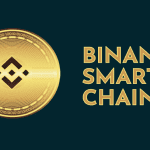Let’s be honest digital isn’t hanging out on the sidelines anymore; it’s running the whole show. From AI tools that plan supply chains to social media shopping and instant global payments, every step of commerce design, sourcing, logistics, checkout, and even after sales is being rebuilt for a digital world.
So what’s really going on? This simple guide lays out what’s shifting, why it matters, and what you can actually do about it.
Commerce today is powered by software and data. As UNCTAD’s Digital Economy Report 2024 points out, digital trade and cross border data flows now set the pace for competitiveness. But without fairer infrastructure and coordinated policy, not everyone will reap the rewards.
Meanwhile, regulators are trying to keep up. In March 2024, WTO members once again extended their moratorium on tariffs for digital products keeping software and e-books duty free for now. But the future? Still up in the air. Around the same time, 80 plus nations joined forces under the WTO’s JSI initiative to shape early rules for digital trade, covering e-signatures and paperless transactions.
If your product lives online, this isn’t background chatter it’s your business framework. These rules define how far you can reach, how much it’ll cost, and how fast you can grow.






















